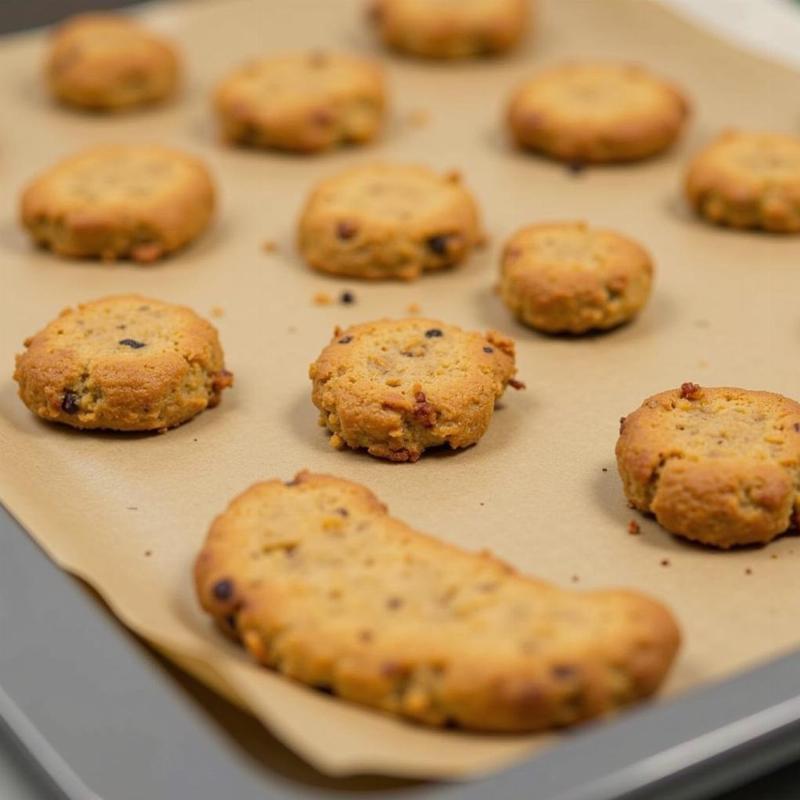Finding the perfect low calorie training treats for your dog can be a challenge. You want something they love that won’t pack on the pounds, especially during intensive training sessions. This guide provides valuable information on selecting and using low-calorie treats, ensuring your furry friend stays healthy and motivated.
Choosing the Right Low-Calorie Treats for Your Dog
Not all treats are created equal. When searching for low-calorie options, consider the following factors:
- Ingredients: Look for treats with whole, natural ingredients. Avoid artificial sweeteners, colors, and flavors. Prioritize treats with high protein and fiber content to help your dog feel full and satisfied.
- Calorie Count: Check the label for the number of calories per treat. A good rule of thumb is to choose treats that contribute less than 10% of your dog’s daily caloric intake.
- Size and Texture: Smaller treats are ideal for training, as they allow for frequent rewarding without overfeeding. Consider your dog’s preferences for texture – some dogs prefer crunchy treats, while others enjoy softer options.
- Palatability: Your dog needs to love the treat! Experiment with different flavors and textures to find what motivates them most.
Healthy Homemade Low-Calorie Dog Treats
Making your own treats allows you to control the ingredients and calorie content. Here’s a simple recipe:
- Ingredients: 1 cup cooked sweet potato, 1/2 cup rolled oats, 1/4 cup plain unsweetened applesauce.
- Instructions: Preheat oven to 350°F. Mash sweet potato. Combine all ingredients in a bowl and mix well. Roll into small balls or use cookie cutters. Bake for 15-20 minutes.
 Homemade Dog Treats
Homemade Dog Treats
Using Low-Calorie Treats Effectively in Training
Maximizing the effectiveness of low-calorie treats involves more than just choosing the right kind. Consider these training tips:
- Timing is Key: Reward your dog immediately after they perform the desired behavior to reinforce the association.
- Keep it Short and Sweet: Training sessions should be short and frequent, especially with puppies. This helps maintain their focus and prevents boredom.
- Variety is the Spice of Life: Rotate between different low-calorie treat options to keep your dog engaged and prevent them from getting tired of the same reward.
- Positive Reinforcement: Focus on rewarding good behavior rather than punishing bad behavior. This creates a positive learning experience for your dog.
Can I use fruits and vegetables as low-calorie treats?
Yes, many fruits and vegetables can be healthy, low-calorie treats for dogs. Carrots, green beans, apples (without seeds or core), and bananas are good options. Always introduce new foods gradually to avoid digestive upset.
Conclusion
Choosing and using low calorie training treats for dogs is an essential part of responsible pet ownership. By selecting healthy, palatable treats and using effective training techniques, you can keep your dog happy, healthy, and motivated. Remember to always consult with your veterinarian for personalized dietary advice.
FAQ
- What are some examples of commercial low-calorie dog treats? Many brands offer low-calorie options, including freeze-dried meats, single-ingredient treats, and small training biscuits. Look for options with natural ingredients and low calorie counts.
- How many low-calorie treats can I give my dog per day? The number depends on your dog’s size, activity level, and the calorie content of the treats. Consult your veterinarian for personalized recommendations.
- Are all “natural” dog treats low in calories? Not necessarily. Even natural treats can be high in calories if they contain fatty ingredients or large portions. Always check the calorie content on the label.
- Can I use my dog’s regular kibble as training treats? Yes, you can use a portion of your dog’s daily kibble allowance for training. This can be a cost-effective and convenient option.
- What if my dog doesn’t seem interested in low-calorie treats? Try experimenting with different flavors and textures. You can also try lightly cooking or dehydrating the treats to enhance their appeal.
- Are there any foods I should avoid giving my dog as treats? Avoid grapes, raisins, onions, chocolate, and xylitol (artificial sweetener). These can be toxic to dogs.
- How can I tell if my dog is gaining weight from treats? Regularly monitor your dog’s weight and body condition. If you notice weight gain, reduce the number of treats or switch to even lower-calorie options.
Beautdogs.us is your premier source for comprehensive dog care information, breed expertise, and product recommendations in the USA. We are dedicated to providing reliable resources for both new and experienced dog owners, empowering you to provide the best possible care for your beloved canine companion. Contact us today for personalized guidance! Email: [email protected] Phone: +1 501-555-7529. Visit Beautdogs.us for more expert advice.